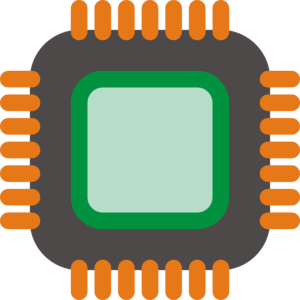
Processors
Intel has presented the architecture that will be the basis of the 12th generation Intel Core, called Alder Lake, with a hybrid design as a great novelty.
In this way, Intel fires first in what will presumably become the new war for dominance of computers and mobile devices. In the first case, Intel has been suffering attacks from AMD and its Zen platform for years, without being able to offer an alternative to its great multicore performance.
Intel’s solution, instead of putting more cores into its processors, goes through a “hybrid” concept, consisting of having cores specialized in specific tasks; In the case of Alder Lake, this architecture will have two different types of cores, a high-performance one, called P-Core, capable of running two threads, and another highly energy-efficient, called E-Core and capable of running one thread. . Each one will be activated depending on the circumstances; for example, if we are just browsing or reading, with the most efficient core it will be enough and we will consume less energy.
It’s not exactly a new idea, of course. The vast majority of modern smartphones have processors based on the same concept, and in fact, this is the second version of a hybrid processor. But it is the first time that it will be applied to processors that we will use in desktop computers, although it will also be available on laptops and mobile devices; Although what type has not been specified, Alder Lake will have three different versions, adapted to those three market niches but based on the same cores and architecture, although the number of each will vary.
Of these three versions, the desktop will use the LGA 1700 socket (not compatible with current motherboards) and will have 8 P cores and 8 E cores, for a total of 24 potential threads. The most powerful of all will have a TDP of 125 W, so it will be a “beast”, although it is expected that there will be several versions for different types of users.
The Mobile model will have 6 P cores and 8 E cores, with 20 threads, and will be designed for UP3 systems, which can consume between 12 and 35 W; therefore, they will likely be used in notebooks and ultraportables.
Lastly, the Ultra Mobile version will have only 2 P cores and 8 E cores, for a total of 12 threads. It is for UP4 systems, which can only consume up to 9 W.
Although it may seem high consumption for a processor like those of mobiles, in reality, Alder Lake is still based on the Intel 7 manufacturing process which, confusingly, does not mean that it is 7 nm (that is Intel 4); instead, it is the same 10nm process used in current processors. The jump to 7 nm is not expected until 2023.
The big problem with having so many cores, and with two different types, is that the system may not take full advantage of them. That’s why Intel has announced a new “thread manager,” a technology that will debut with Windows 11 to make the system split tasks into the appropriate threads.
Those with the highest priority will go to the P cores, while those in the background will go to the E cores. This choice will be made by hardware for the first time, making the process faster and more efficient, and avoiding Windows having to dedicate itself to that; although the process will be transparent and the operating system will be able to monitor it.
The first 12th generation Alder Lake processors will arrive next fall, although at the moment the models in the range have not been detailed, and which devices will be the first to use them.






